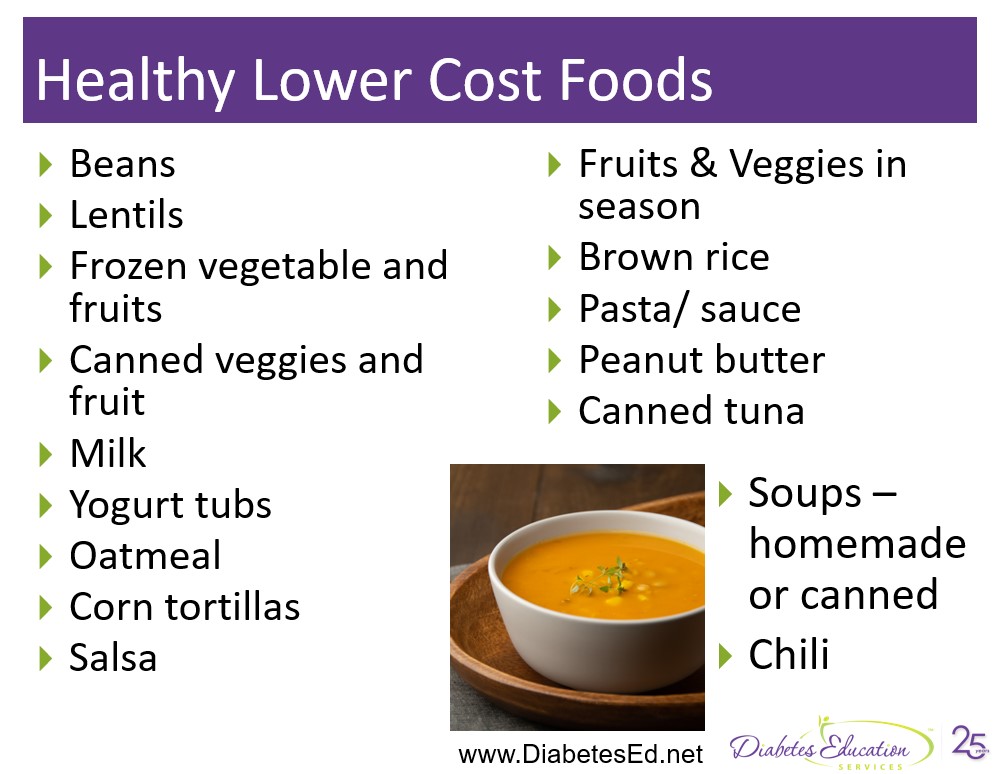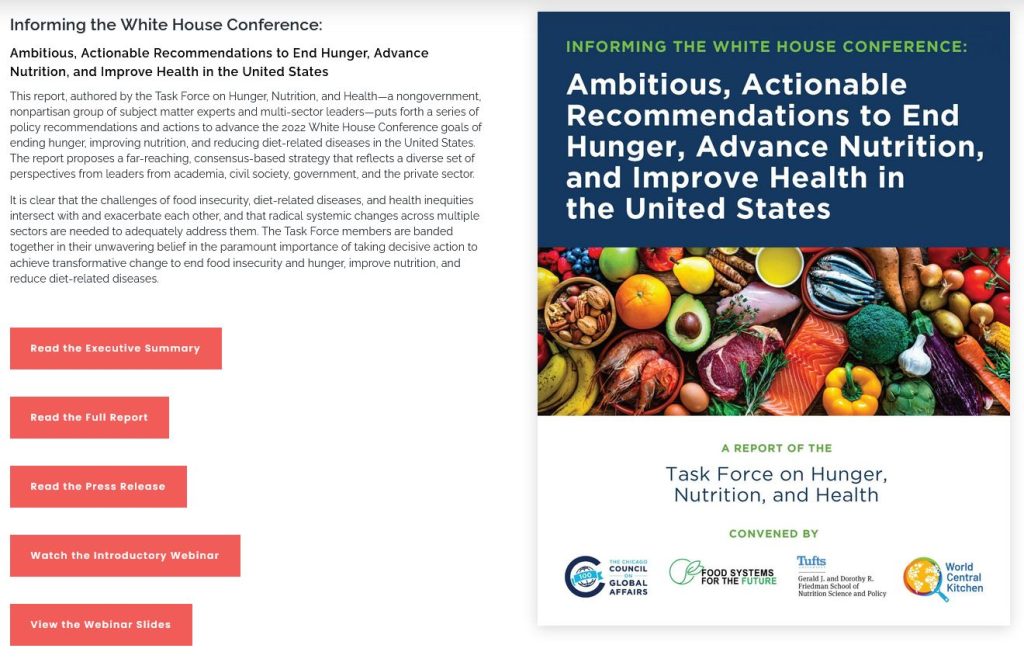Does Food Order Affect Post-Meal Blood Sugar?
Several studies over the last decade support that post-meal blood sugars can be improved by changing the order of the foods eaten. By starting with vegetables and protein foods, then moving to carbohydrates, participants across studies experienced a significant improvement in postprandial blood glucose levels. This simple adjustment of food order provides people living with diabetes with an easy tool to reach glucose targets.
In a 2015 study published in Diabetes Care, a dozen subjects were fed the same meal of grilled chicken, ciabatta bread, orange juice, lettuce, and tomato salad plus steamed broccoli with butter on two different days. The researchers measured glucose and insulin levels before food ingestion and 30, 60, and 120 min after the start of the meal.
When vegetables and protein were consumed first, before carbohydrates, compared with the reverse food order, there was a 28.6% decrease in average post-meal glucose. The authors concluded that “the temporal sequence of carbohydrate ingestion during a meal has a significant impact on postprandial glucose and insulin excursions”.
The simple action of eating veggies and protein leads to improvement in glycemia through optimal timing of carbohydrate consumption during a meal.

In a different study where researchers recruited 15 participants from Weill Cornell Medical College. Participants consumed the same meal for 3 days changing the three separate food-type orders: carbohydrate, protein, and vegetables.
As with the previous study, researchers found that “although all baseline fasting glucose concentrations were similar, glucose levels were decreased at 30 and 60 minutes after the protein and vegetable first order.”
In addition, the vegetable first meal order resulted in lower glucose levels at 30 and 60 minutes than the carbohydrate first meal order. Researchers found that the vegetable first meal pattern reduced insulin excursions and that incremental AUC for insulin was 43.8% lower than for the carbohydrate first meal order.
Researchers say the reason for improved glucose is complicated, but is probably due to a combination of factors. Eating protein and veggies first may stimulate the early release of GLP-1 hormones and consuming fiber-rich vegetables can slow down carbohydrate digestion.
Fiber Foods – the Unsung Heroes
The benefits of fiber have been supported by over 100 years of research. Studies reveal that eating more fiber can lower your risk of developing serious illness over time.
“When compared with those who consume very little fiber, people at the high end of the fiber-eating spectrum saw their risk for dying from heart disease, stroke, type 2 diabetes and/or colon cancer plummet by 16 to 24 percent, investigators reported.”
Exciting enough, the more fiber a person consumed, the risk of developing those illnesses continued to decrease. The range of illnesses that a higher intake of fiber seemed to impact surprised scientists.
Researchers say that American’s on average, eat less than 15 grams of fiber per day. However, increasing intake to 25-29 gms per day is just “adequate.” The more fiber a person incorporates in their diet, the greater the decrease in the overall risk of early death.
Every additional 15-gram bump in daily whole grain intake was found to curtail an individual’s overall risk of early death — as well as their risk of early death from heart disease — by between 2 and 19 percent.
Researchers also found that increasing fiber intake had no risky health effects and that it is never too late to start embracing fiber every day!
“When considering all the trials of increasing fiber intakes, those participants that did reduce both their body weight and the total cholesterol in their blood, two important predictors of disease.”
Although none of these discoveries are surprising, scientists hope this will lead to changes in dietary recommendations. “This is just one more piece of evidence that supports and further solidifies the recommendations registered dietitian nutritionists have been making for years,” said Sandon.
It is never too late to start eating healthy and fiber may be a great starting point for many!
Here are some common foods and their fiber content:
- 1 slice of whole wheat bread has 2 grams
- 1 cup of boiled broccoli has 5 grams
- 1 medium orange has 3 grams
- 1 cup of cooked black beans has 15 grams.
Please see our Plant-Based Eating Resource Page for more info!
Register now for our Virtual DiabetesEd Training Conference

Your team is invited to our Virtual DiabetesEd™ Training Conference! Set your team apart and prepare for diabetes certification!
Join this state-of-the-art conference taught by content experts, Diana Isaacs, PharmD, BCPS, BCACP, BC-ADM, CDCES, Beverly Thomassian RN, MPH, CDCES, BC-ADM, and Ashley LaBrier who are passionate about improving diabetes care.
Group discounts are available!*
All hours earned count toward your CDCES Accreditation Information
Sign up for Diabetes Blog Bytes – we post one daily Blog Byte from Monday to Friday. And of course, Tuesday is our Question of the Week. It’s Informative and FREE! Sign up below!
The use of DES products does not guarantee the successful passage of the CDCES exam. CBDCE does not endorse any preparatory or review materials for the CDCES exam, except for those published by CBDCE.
Ramadan & Fasting Considerations for People Living with Diabetes
Ramadan Mubarak… Happy Ramadan.
This evening, Ramadan begins. It is the most important spiritual time for the 1.8 billion Muslims around the world.

In Islam, Ramadan is the month in which the first verses of the Quran, were revealed to the Prophet Muhammad. In observance, many Muslims fast by abstaining from food, drink, smoking, and sex, from pre-sunrise to sunset. This fasting achieves greater “taqwa” or “consciousness to God.”
As Diabetes Care and Education specialists, we have the chance to provide tools for those who fast while keeping diabetes in mind.
The Association for Diabetes Care and Education Specialists (ADCES) put together some helpful handouts to better support people who are fasting and living with diabetes.
Below is the list of resources shared by ADCES
- Fasting and Diabetes web hub
- Fasting with Diabetes Healthcare professionals handout – This handout includes information for potential interventions, potential complications to look out for, nutritional recommendations, and more.
- Ramadan and Diabetes Handout for People Living with Diabetes – English
- Ramadan and Diabetes Handout for People Living with Diabetes – Arabic
To read more about Ramadan, click here.
To take our Question of the Week that considers Type 1 and fasting during Ramadan.
How to Start a Community Fridge
Last month, we launched our very first Community Fridge in our local area!
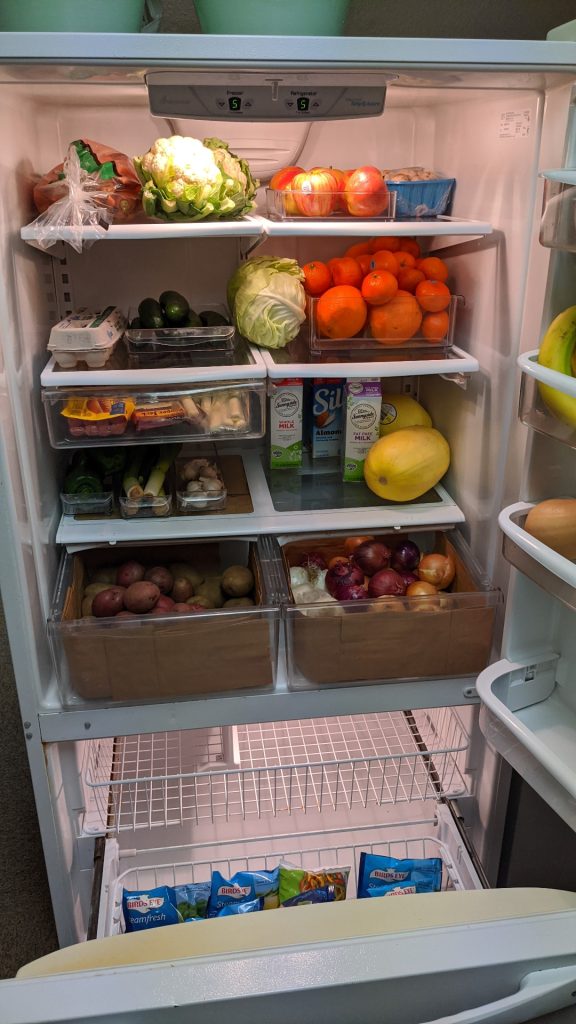
A few months ago, a group of us got together with the goal of helping to bridge the gaps that lead to food insecurity in our community.
While there are several food banks in our town, there weren’t a lot of options for whole, fresh produce or dairy – focusing on shelf-stable dry goods or meats. We knew other cities had created community fridges and wanted to see if we could offer something similar.
The first step was to find a location; we knew we wanted it to be accessible, but also in an area that could prevent vandalism. We reached out to our local LGBTQ+ center and asked if they had space for a fridge and would be willing to host. After a few conversations, we secured our location.
The second step was to find a fridge. We looked around on Craigslist and found one for free. We got a group of volunteers together to pick up the fridge and drop it off at the LGBTQ+ center.
Lastly, now that we had a fridge and a location, we needed to get the word out. We set up an Instagram and Facebook account, made some flyers, and started sharing posts with our followers.
To ensure there is a rotation of donors throughout the week and that the fridge is cleaned regularly, we created a Calendly to establish a schedule.
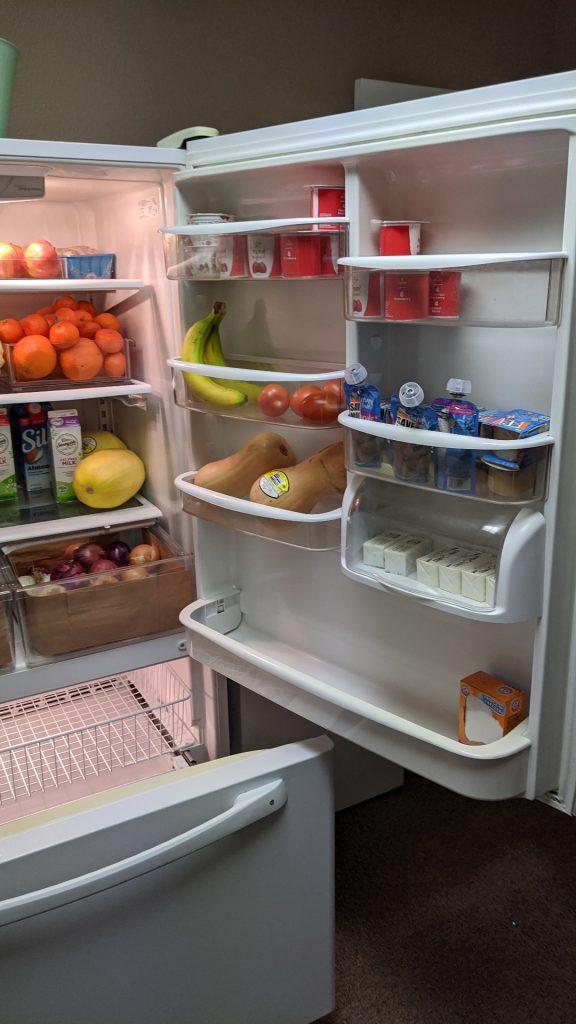
During our research, we noticed that other community fridges had best practices and guidelines, such as only donating food you would eat yourself, washing your hands before donating/picking up, and tips for cleaning the fridge. We typed up our own set of guidelines to put on the fridge along with a whiteboard for suggestions/requests for specific foods.
The LGBTQ+ center already has a monthly food bank event, which we decided was the perfect opportunity to introduce the fridge to those who already use the food bank.
The morning of the food bank event, we got together early and made a run to the grocery store. We knew we wanted a variety of fruits, veggies, and dairy, focusing more on items that have a longer shelf life. We decided to also pick up frozen veggies such as spinach, broccoli, and corn, in case someone had access to a freezer and wanted foods that would last a little longer.
We made our way to the LGBTQ+ center and started stocking the fridge. As we were adding in items, person after person came by to pick up food, sharing their ideas for what recipes they were going to make. It was such a joy to hear their inspiration for which produce or dairy matched the meat and dry goods they already got from the food bank.
We are so excited to have this resource available to our community and are looking forward to more people using it.
Written by Bryanna, our Director of Operations & Customer Happiness
FREE Resource Catalog

- Diabetes Cheat Sheets
- Diabetes Blog Bytes
- Medication PocketCards
- 10 Steps to Succeed
- CDCES Coach App
- Free Webinars hosted by Coach Beverly
- Question of the Week
- Free Diabetes Article Library
See Full Free Resource Catalog
Sign up for Diabetes Blog Bytes – we post one daily Blog Byte from Monday to Friday. And of course, Tuesday is our Question of the Week. It’s Informative and FREE! Sign up below!
The use of DES products does not guarantee the successful passage of the CDCES exam. CBDCE does not endorse any preparatory or review materials for the CDCES exam, except for those published by CBDCE.
National Nutrition Month – Tasty Ways to Keep it Sustainable
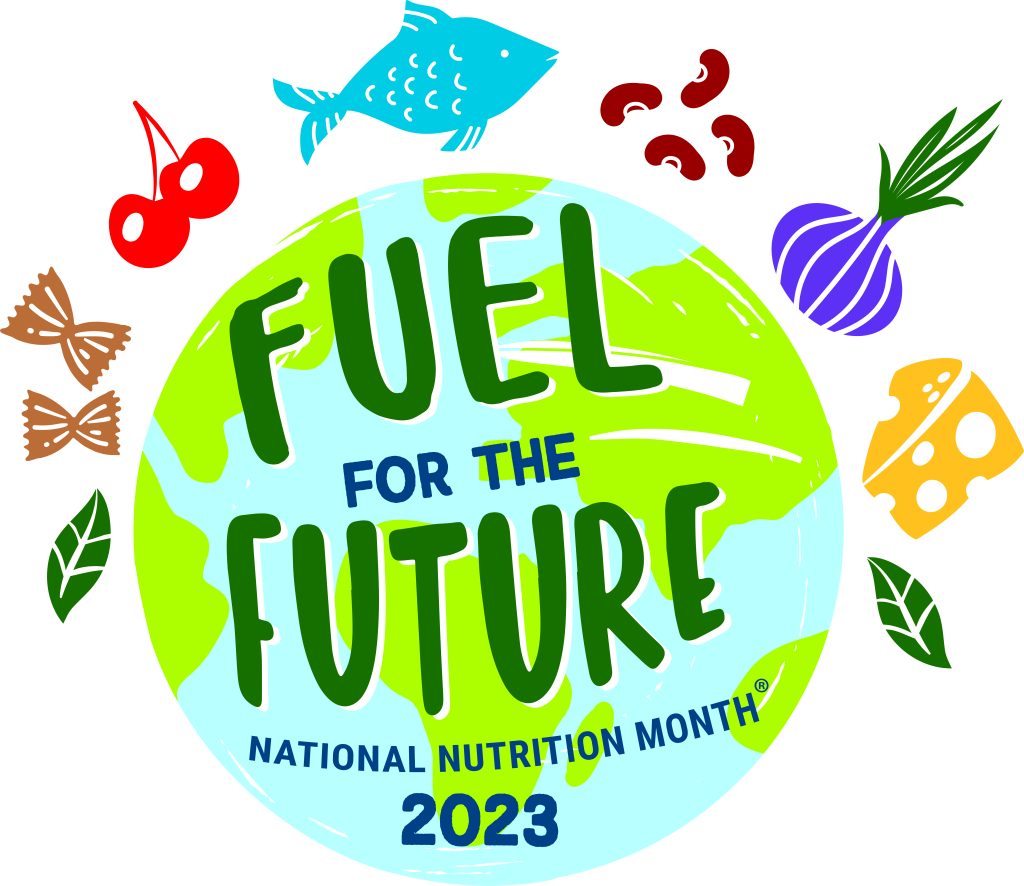
The Academy of Dietetics and Nutrition is kicking off National Nutrition Month with a new slogan, “Fuel for the Future”.
They are shining a light on considering food consumption through a lens of sustainability. What are some tasty ways to nourish ourselves during every phase of life and protect the environment?
Registered Dietitian Nutritionists are experts in addressing this question. But how can all diabetes care and education specialist help support healthy habits that are sustainable and celebrate the individual’s unique needs?
Strategies to eat with the environment in mind
Plant-Based Meals and Snacks
A great way to get started is to help people learn how to enjoy more plant-based meals and snacks and decrease meat intake. Both the American Diabetes Association and the American Academy of Endocrinologists highly recommend plant-based nutrition for people with diabetes. Not only are plant-based foods packed full of nutrients, protein, and fiber, they generally confer fewer calories and decrease inflammation. Another added bonus is that they have less impact on planetary health and are more sustainable.
Plant-based eating resources including recipes below. Feel free to copy and share!
- Plant-Based Eating Newsletter and Recipes »
- Plant-Based Cooking – Recipes »
- Plant-based diet may benefit patients with diabetes – Smart Brief
- Vegetarian Starter Kit » an easy-to-read and colorful handout for patients interested in learning more about a vegetarian diet. Published by the Physicians Committee for Responsible Medicine.
Sustainable Eating and Decreasing Food Waste
About one-third of all food is tossed into the trash, filling up landfills and increasing methane gas release. Some strategies to decrease waste include finding creative ways to use leftovers rather than tossing them and composting uneaten foods. Encouraging people to buy foods in season and shop locally when possible can make a big impact on the environment while reducing food costs. Another idea is to start a container or backyard garden to grow food at home.
Resources on decreasing food waste and increasing sustainable eating:
- Sustainable Eating article by the Academy of Nutrition and Dietetics
- Food Dates Lead to Waste- Taste Before Tossing
- 5 tips for Sustainable Eating article by Harvard School of Public Health
- Sustainable Eating Resource Hub by Food Print
- Produce from Purchase to Plate – Steps to Reduce Food Waste article by the Academy of Nutrition and Dietetics
- Local Farmer’s Market Finder by Local Harvest – find Community Supported Agriculture farmers in your area.
To stretch dollars, use a grocery list and shop sales when purchasing food. See what foods are at home before purchasing more.
How many times have you returned from shopping, only to discover you already had that bag of carrots tucked away in the back of the refrigerator? But by taking an inventory of what we have and creating a list of what is needed, we can all reduce waste. When shopping, encourage people to start with the outside isles, which generally display healthier foods while avoiding the center and display isles. Incorporating favorite cultural foods into the shopping list and eating foods in various forms including fresh, frozen, canned, and dried, can add to the variety and affordability.
Practice gratitude for your body by giving it the fuel it needs.
Choosing foods that nourish our body and expressing gratitude for the labor and work that went into harvesting and preparing our food, can improve our relationship with food. Making meals at home, by ourselves or with people we live with, can create connections and joy. By learning cooking and meal preparation skills, people have the opportunity to try new foods and enjoy flavors from around the world. Taking time to enjoy our food by mindfully eating and creating long lasting memories with friends and family is a great place to get started on this journey to tasty and sustainable eating.
Happy Nutrition Month everyone and thank you for considering these small changes, which when added up, make a big difference.
Visit the CDR Website for more great ideas and to access a bounty of free resources.
Want to learn more about Medical Nutrition Therapy?
You are invited to join our Virtual Conference with our Nutrition expert speaker, Ashley LaBrier, MS, RD, CDCES, who will be providing a half-day presentation on this important topic!

Ashley LaBrier, MS, RD, CDES, is an innovator in the field of diabetes, nutrition, and technology. Ashley is a consultant and the Diabetes Education Program Coordinator at the Salinas Valley Medical Clinic’s Diabetes & Endocrine Center.
Ms. LaBrier is passionate about providing person-centered education to empower those who live with diabetes. Having been diagnosed with type 1 diabetes herself nearly 20 years ago, she combines her professional knowledge with personal experience and understanding.
Virtual DiabetesEd Training Conference

Whether you are new to diabetes or a seasoned expert, you’ll benefit from this virtual conference with the latest research plus critical content that you can immediately apply to your clinical practice.
If you are seeking a state-of-the-art review of current diabetes care, this course is for you. Our team has been fine-tuning this course for over fifteen years, and we know what you need. This program can also be a great addition to your CDCES or BC-ADM exam study plan.
Group discounts are available!*
Download Course Flyer | Download Schedule
All hours earned count toward your CDCES Accreditation Information
Sign up for Diabetes Blog Bytes – we post one daily Blog Byte from Monday to Friday. And of course, Tuesday is our Question of the Week. It’s Informative and FREE! Sign up below!
The use of DES products does not guarantee the successful passage of the CDCES exam. CBDCE does not endorse any preparatory or review materials for the CDCES exam, except for those published by CBDCE.
Strategies to Address Diabetes & Food Insecurity
Ambitious Action Plan to Help Americans Eat Healthier | Free White House Conference
Can Fruits Boost Positive Mental Health?
Good news! People with diabetes can experience more joy and less depression by incorporating fruit into their diet. A study published in the British Journal of Nutrition found that swapping out cookies or chips for a few servings of fruit a day, boosted positive mental health.
How many times have you heard people or providers say they can’t eat fruit because it will wreak havoc on their diabetes? That statement is actually not accurate nor is it backed by science.
The truth is, people who consume a diet rich in fruits and vegetables, including fresh, canned, and frozen varieties, report a more positive psychological state. In addition, they are less likely to have symptoms of depression, stress, and anxiety compared to those who do not eat these nutrient-rich foods on a regular basis.
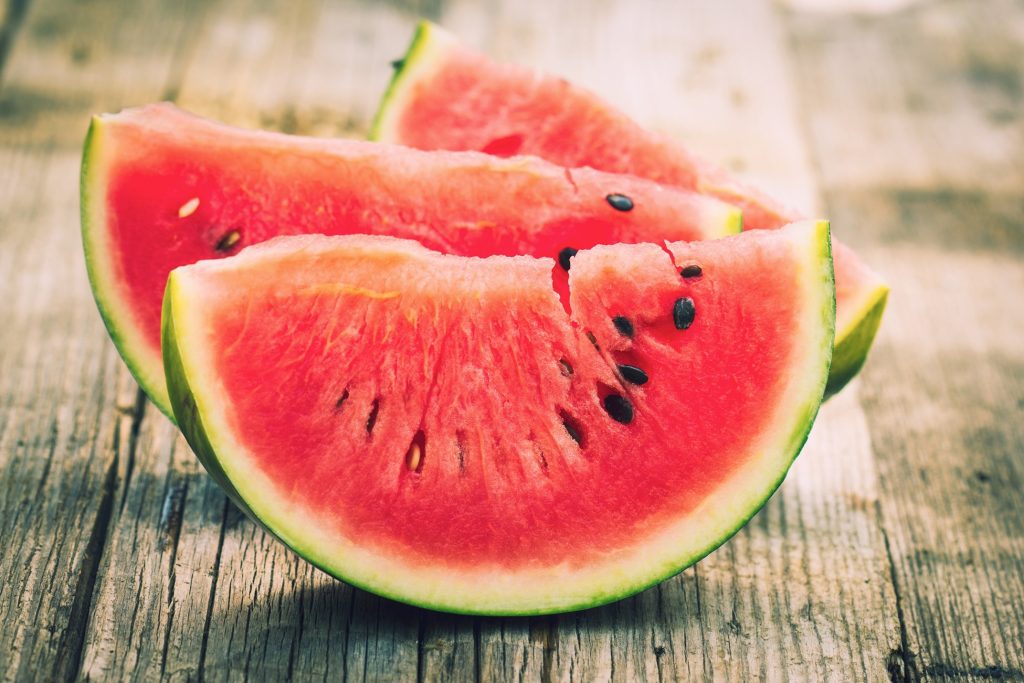
Why are fruits so good for our mental health?
Snacking on fruits throughout the day can promote the synthesis of serotonin, which improves moods. Plus, healthy gut bacteria thrive on the fiber and nutrients provided by these nutritional powerhouses. As a result, there is improved gut-brain communication and cognition and decreased inflammation.
Eat More Fruit and Fewer Snack Foods
These study results provide new insights into the associations between certain types of food and psychological health, and the mechanisms that may mediate the effect. This study identified that frequent fruit consumption has a direct positive relationship with mood. Whereas more frequent consumption of savory snacks, like packaged chips and other high-fat snack foods, was associated with increased symptoms of depression, stress, anxiety, and reduced psychological wellbeing.
People with diabetes are encouraged to celebrate fruit
Even though this study did not specifically evaluate people living with diabetes, they can still celebrate this news. Many people with diabetes think they have to avoid fruit since it contains sugar. However, by spreading their fruit consumption throughout the day, they can enjoy three servings a day, guilt-free. By watching portions, they can enjoy a rainbow of fruit knowing that they are boosting their mental health and well-being. In addition, we can encourage them to explore ways to include vegetables in their usual meals. These little changes can add up to big improvements in well-being and cognition.
For a quick list of fruit servings sizes in English and Spanish, you can download our Carbohydrate Cheat Sheets here, Carb Counting Quick Reference and Spanish Carb Counting Quick Reference.
Want to learn more about Diabetes Care? Join us for our
Virtual DiabetesEd Specialist Conference
30+ CEs
Airs October 12-14th, 2022
Join us LIVE for this Virtual Course and enjoy a sense of community!
Whether you are new to diabetes or a seasoned expert, you’ll benefit from this virtual conference with the latest research plus critical content that you can immediately apply to your clinical practice.
Download Course Flyer | Download Schedule
If you are seeking a state-of-the-art review of current diabetes care, this course is for you. Our team has been fine-tuning this course for over fifteen years, and we know what you need. This program can also be a great addition to your CDCES or BC-ADM exam study plan.
Team of expert faculty includes:
- Diana Isaacs, PharmD, BCPS, BC-ADM, BCACP, CDCES – Educator of the Year, 2020
- Coach Beverly Thomassian, RN, MPH, CDCES, BC-ADM
- Ashley LaBrier, MS, RD, CDCES, Diabetes Program Coordinator
Two Registration Options
Don’t worry if you can’t make it live. Your registration guarantees access to the recorded version in the Online University.
All hours earned count toward your CDCES Accreditation Information
Sign up for Diabetes Blog Bytes – we post one daily Blog Byte from Monday to Friday. And of course, Tuesday is our Question of the Week. It’s Informative and FREE! Sign up below!
The use of DES products does not guarantee the successful passage of the CDCES exam. CBDCE does not endorse any preparatory or review materials for the CDCES exam, except for those published by CBDCE.
Warning – Food Dates Can Lead to Unnecessary Waste
Have you inspected a salad mix that you bought last week and wondered if you should toss it because it expired yesterday? If you said yes, you are not alone. About 40% of food waste happens in the kitchen, when consumers throw away foods that have passed the expiration date.
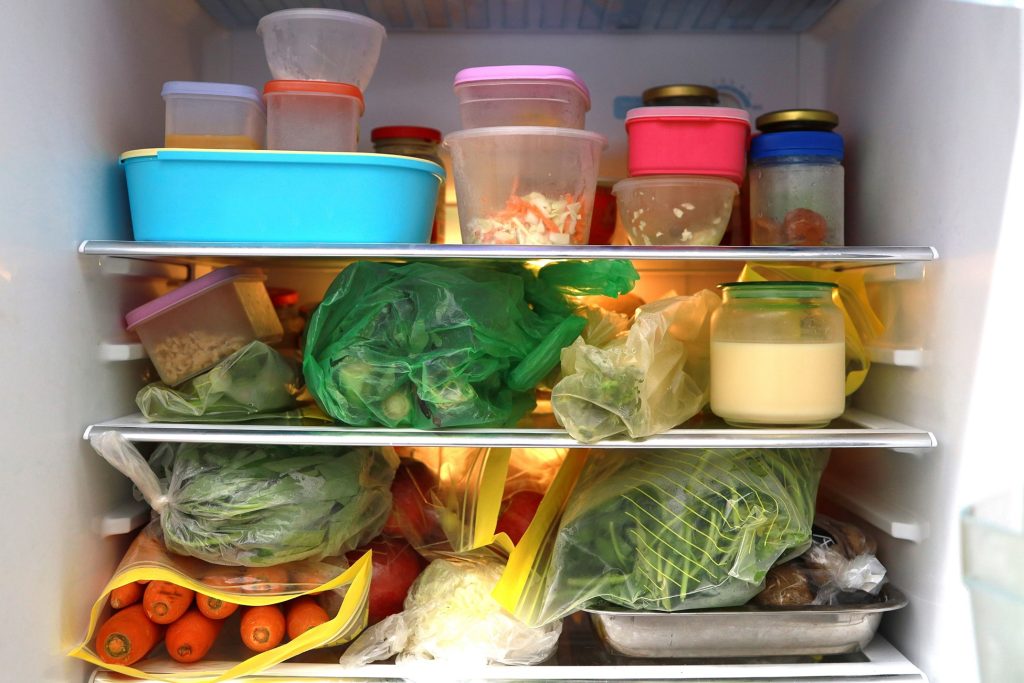
However, food and legal experts are asking consumers to reconsider their thinking.
According to an NPR Article, “The U.S. Department of Agriculture, the Food and Drug Administration, the Harvard Food Law Clinic – all say that consumer uncertainty about the meaning of food dates is part of the food waste problem. And it’s not just about wasting food or wasting the water and resources that went into making it. Food is the main thing we send to U.S. landfills.” Food in landfills is converted to methane, a highly potent greenhouse gas.
Consider all the money we are throwing way every day by disposing of foods that might be perfectly fine for consumption. For people living with diabetes on a limited or fixed income, it can really add up. In addition, people may avoid purchasing fresh fruits and vegetables if they are worried about eating it by the date stamped on the package.
Research shows that one in three bags of groceries purchased will end up in the trash due to dates stamped on food items. What do these dates mean anyway?
The federal government doesn’t require dates on any food except baby formula. According to the United States Department of Agriculture (USDA), foods are still safe for consumption after these expiration dates pass, but make sure to look out for an off odor, flavor, or texture that mean the food has spoiled and should not be eaten.
The FDA says the dates on food aren’t serving a safety role. A food and law expert, Broad Leib says, “however, you do want to pay attention to dates on food in the prepared food section, including deli meat, raw fish, unpasteurized milk and cheese.”
But for most foods, like a box of mushrooms or a bottle of ketchup, Broad Leib suggests we take a pause to look at the food. Smell and taste it to determine if it seems okay to eat. We can tell if something went bad.
Except for infant formula, dates are not an indicator of the product’s safety and are not required by Federal law.
Where do the dates come from? Since the federal government doesn’t require the dates, the “sell by” or “enjoy by” dates are determined mostly by the manufacturers. Manufacturers put the date on the package to encourage consumers to eat the food product when it tastes best, not when the food will go “bad”. They want to protect their brand and encourage the consumer to purchase their product again.
Sometimes states will get involved in determining a shelf life of a product for various reasons, including supporting local companies. For this reason, there is a lot of discrepancy from state to state, since the date isn’t based on food spoilage data. An example is that in Montana, milk has to be sold within 12 days of pasteurization. In Idaho, the milk can stay on the shelf for 23 days.
Deciphering Food Label dates:
- “Best if Used By/Before” indicates best flavor or quality. It is not a safety date.
- “Sell-By” date tells the store how long to display the product for sale for inventory management. It is not a safety date.
- “Use-By” date is the last date recommended for the use of the product while at peak quality. It is not a safety date except for when used on infant formula*.
Food makers, grocery stores, federal agencies are ready to decrease the confusion and food waste. They suggest getting rid of all the “enjoy-by, packaged on” dates and have only two options – best if used by or use by.
“Best if used by” would tell consumers this ketchup would be best by this date, but you could still eat it after.
“Use by” would tell consumers, after this date, it’s probably not a good idea to eat the mustard.
The next time you are ready to toss your salad mix or Worchester sauce, look it over, take a whiff or a taste and you will know if it’s still good to eat.
For more information, see our Protecting the Planet Resource Page.
Want to learn more about Diabetes Care? Join us for our
Virtual DiabetesEd Training Conference
30+ CEs
Airs October 12-14th, 2022
Your team is invited to our Virtual DiabetesEd™ Training Conference! Set your team apart and prepare for diabetes certification!
Join this state-of-the-art conference taught by content experts, Diana Isaacs, PharmD, BCPS, BCACP, BC-ADM, CDCES, Beverly Thomassian RN, MPH, CDCES, BC-ADM, and Ashley LaBrier who are passionate about improving diabetes care.
?Group discounts are available!*
Download Course Flyer | Download Schedule
Join us LIVE for this Virtual Course and enjoy a sense of community!
Team of expert faculty includes:
- Diana Isaacs, PharmD, BCPS, BC-ADM, BCACP, CDCES – Educator of the Year, 2020
- Coach Beverly Thomassian, RN, MPH, CDCES, BC-ADM
- Ashley LaBrier, MS, RD, CDCES, Diabetes Program Coordinator
Don’t worry if you can’t make it live. Your registration guarantees access to the recorded version in the Online University.
All hours earned count toward your CDCES Accreditation Information
Sign up for Diabetes Blog Bytes – we post one daily Blog Byte from Monday to Friday. And of course, Tuesday is our Question of the Week. It’s Informative and FREE! Sign up below!
The use of DES products does not guarantee the successful passage of the CDCES exam. CBDCE does not endorse any preparatory or review materials for the CDCES exam, except for those published by CBDCE.



